
| Home | Deepsky Atlas | TheAstronews | Links | Solar System | ||||||

Hawaiian Astronomical SocietyConstellations: Tucana -- A Toucan |
||||||||||
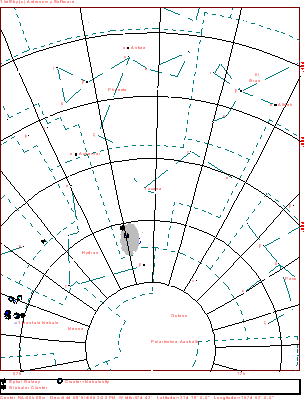
Click the map for a 916x1200 version of the above. Click here for a map better suited for use in the field.
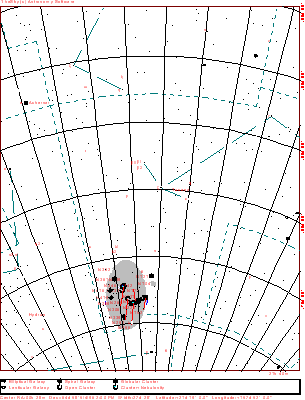
This a more detailed view of the constellation. The map displays stars to magnitude 10, and deepsky objects to magnitude 12. Click here for a map better suited for use in the field.
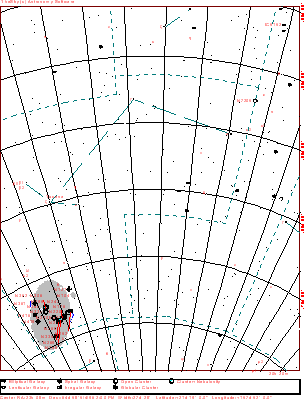
Click here for a map better suited for use in the field.
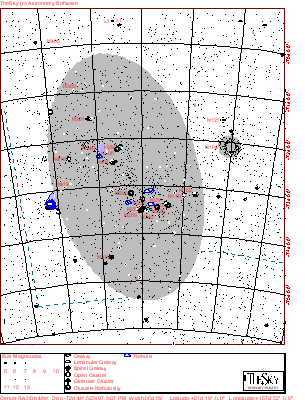 |
One of Dreyer's extremely remarkable objects, NGC292 is an irregular galaxy visible to the naked eye. It forms a pair with the Large Magellanic Cloud, located 22° away. It lacks the huge nebula of its larger neighbor, but resolves into what appears to be a Milky Way star cloud. Closer inspection with larger instruments reveals a number of open and globular clusters embedded in the galaxy. Prominent globulars include the mag. 10 globular NGC419, lying on the east central portion of the cloud; and NGC121, a mag. 10.6 cluster located just north of the naked eye globular 47 Tucanae. Open clusters include NGC 346 (mag. 10.3, and strongly nebulous) and 371 (20' to the ENE of NGC346, described as faint, a 10-12" scope should begin to resolve it). Both open clusters are located just north-east of the center of the galaxy. Click here for a map better suited for use in the field. |
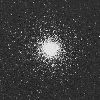 86k JPEG. NGC104 (47 Tucanae, Bennett 2, or Caldwell 106) is a naked eye globular cluster located just west of the Small Magellanic Cloud. Dreyer calls it a very remarkable object, very bright (mag. 4), very large (31'), extremely rich, and very condensed. From the Digital Sky Survey. 86k JPEG. NGC104 (47 Tucanae, Bennett 2, or Caldwell 106) is a naked eye globular cluster located just west of the Small Magellanic Cloud. Dreyer calls it a very remarkable object, very bright (mag. 4), very large (31'), extremely rich, and very condensed. From the Digital Sky Survey.
|
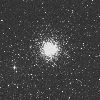 79k JPEG. NGC362 (Bennett 7, Caldwell 104) is a globular cluster located on the NE border of the Small Magellanic Cloud. Dreyer calls it very bright (mag. 6.6), very large (13'), and very condensed. From the Digital Sky Survey. 79k JPEG. NGC362 (Bennett 7, Caldwell 104) is a globular cluster located on the NE border of the Small Magellanic Cloud. Dreyer calls it very bright (mag. 6.6), very large (13'), and very condensed. From the Digital Sky Survey.
|
If you have any questions about the Hawaiian Astronomical Society
please
(link requires javascript).